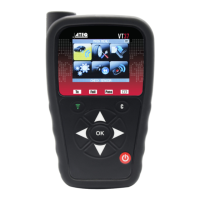specialized recycler.
Do not dispose of Lithium-polymer
batteries with your general waste.
The Lithium-polymer battery is not suitable for
children under 14 years. Keep all Lithium-Ion
batteries out of the reach of children
To prevent leakage or other hazards, do not
store batteries above 60°C (140°F). Never
leave the battery inside a car (for example)
where the temperature could be very high or in
a place where temperatures could exceed
60°C (140°F). Store the battery i
n a dry place
to
avoid contact with liquid, whatever the type.
Only store the battery on a nonflammable
surface, heat resistant, non-conductive and
away from all flammable materials or sources.
Always store the battery out of the reach of
children.
A Lithium-polymer battery should be stored
with a minimum charge of 30%. If you store it
completely discharged, it will quickly become
unusable.
Failure to follow these safety precautions may
cause serious personal injury and damage to
propert
y. You may even cause a fire!
The
ATEQ Company
disclaims any responsibility for damage
sustained in the event of non-compliance with
these safety instructions.
Using a Lithium-Ion battery has a high risk of
fire and can cause serious damage to property
and persons. The user agrees to accept the
risk and responsibility.
The
ATEQ Company is not
able to monitor the proper use of the battery
with each customer (charge, discharge,
storage etc.). It cannot be held responsible
for
any
damage to persons or property.
3. FCC STATEMENTS
Federal Communication Commission
Interference Statement
This equipment has been tested and found to
comply with the limits for a Class B digital
device, pursuant to Part 15 of the FCC Rules.
These limits are designed to provide
reasonable protection against harmful
interference in a residential installation. This
equipment generates, uses and can radiate
radio frequency energy and, if not installed
and used in accordance with the instructions,
may cause harmful interference to radio
communications. However, there is no
g
uarantee that interference will
not occur in a
particular installation. If this equipment does
cause harmful interference to radio or
television reception, which can be determined
by turning the equipment off and on, the user
is encouraged to try to correct the interference
by one of the following measures:
- Reorient or relocate the receiving antenna.
- Increase the separation between the
equipment and receiver.
- Connect the equipment into an outlet on a
circuit
diffe
rent from that to which the receiver
is connected.
- Consult the dealer or an experienced
radio/TV technician for help.
FCC Caution: Any changes or modifications
not expressly approved by the party
responsible for compliance could void the
user's authority to operate this equipment.
This device complies with Part 15 of the FCC
Rules. Operation is subject to the following two
conditions: (1) This device may not cause
harmful interference, and
(2) this device must
accept
any interference received, including
interference that may cause undesired
operation.
5. CE STATEMENTS
DECLARATION OF CONFORMITY
The manufacturer of the TPMS TOOL declares that
this device complies with the requirements of:
- ETSI EN 300 330-1 V1.8.1 (2015-03):
Electromagnetic compatibility and Radio spectrum
Matters (ERM); Short Range Devices (SRD); Radio
equipment in the frequency range 9 kHz to 25 MHz
and inductive
loop systems in the frequency range
9 k
Hz to 30 MHz; Part 1: Technical characteristics
and test methods.
- ETSI EN 300 330-2 V1.6.1 (2015-03):
Electromagnetic compatibility and Radio spectrum
Matters (ERM); Short Range Devices (SRD); Radio
equipment in the frequency range 9 kHz to 25 MHz
and inductive loop systems in the frequency range
9 kHz to 30 MHz; Part 2: Harmonized EN covering
the essential requirements of article 3.2 of the
R&TTE D
irective.
BS EN 62479:2010:

